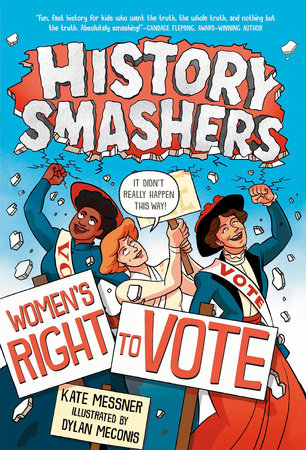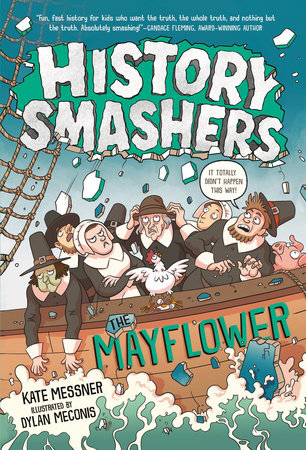Hello Mixed-Up Filers!
We’re in for a real treat today! Growing up, Saturday morning TV was an event. I woke up early to watch all the cartoons and shows for kids, and one of my favorites was Shazam! Well, I’m excited to say that I recently I got the chance to speak to the Captain Marvel from that series, Jackson Bostwick! So, please help me welcome him to Mixed-Up Files!
Hi Jackson, thanks for joining us today!

JR: To start with, how did you first get into acting?
JB: I never thought I was going to be an actor when I was in college. I was in pre-med. My dad was a neurosurgeon and I was in pre-med at the University of Alabama. My major was Biology, minored in Physics and Chemistry, could’ve triple minored in Psychology and if you’d have told me I was going to be an actor in my life, I’d have said you’re a damn fool.
I did not try anything until I was in the Army. I went through ROTC at Alabama because when I was at college, we were in the middle of the Vietnam War and they had the draft. I knew I was not going to go in as a grunt, so I took ROTC because I wanted to go in as an officer. So I’m, I’m in the army, and after twenty weeks I was at Fort Sam Houston and a medical supply officer. And funny, they give you a choice of what you could be, you know which branch you wanted to go in. Well, I had infantry first, artillery second and medical third because of my medicine. So, they gave me my third. Anyway, I was a medical supply officer and later, I’m stationed in Southern California, in charge of the hospital at Fort Irwin.
Anyway, one day I get a postcard in the mail that says, “We’d like to see you for an interview.” It was The Dating Game. I go in and say, “Which one of you guys sent my name?” They said, “Oh, lieutenant, you’ve got to go.”
I went down, did great in the interview. I had them rolling. And they made me wear my uniform. I was bachelor number one. I didn’t get it, but backstage, I’m approached by this guy, and he said, “Have you ever thought about getting into acting?” He introduced himself. His name is Phil Benjamin. He was in charge of casting at Universal. And I said, “I ain’t never done a thing in my life.” I had that southern accent. He said, “Well, why don’t you see about getting some training and then come look me up?” So, I get back to Fort Irwin, I call my dad, I said, “Dad, this guy came back, da da da da. Do you think I ought to give it a shot?” He said, “Well, as long as you’re continuing your schooling, okay, go ahead.”
I went to USC to study acting and was one of the original members of their MFA program.
JR: That’s amazing! I read that you were a big reader of the Captain Marvel comics as a kid. What was it that drew you to Captain Marvel as opposed to some of the more famous heroes like Superman and Batman?
JB: You have a little kid that can say a magic word and he can take care of business, becomes a superhero. Plus, the way they were drawn was fun, and had all these great villains. Mr. Mind, King Kull, Captain Nazi and of course, Silvana.

All of this was fun to read. That’s why it outsold Superman. That’s why DC sued them. It reminded me of the shows I used to like, The Lone Ranger, Tarzan, and The Shadow.
JR: I read that later you actually became friends with Clayton Moore?
JB: We were very good friends. In fact Clay even approached me at one time when he was having problems with this the mask thing. And I kept encouraging him, because I had the same problem when Filmation fired me. I said, just let the fans do the talking. Don’t worry about it. Just get Gucci glasses and go out. He was constantly calling me. He wanted me to play him in his life story. Then, they made a Lone Ranger remake in 1981, but they got Klinton Spilsbury instead, and dubbed the entire movie, Stacey Keach’s brother, James Keach was the voice of the lone ranger because Klinton’s voice was too high.
Clay also told me the story about the time that he stopped on the side of the road to help somebody. He’d just come from an appearance and he still had the costume on. This is the same story that Jay Thomas told on David Letterman.
(JR: If you’ve never seen the Jay Thomas/Lone Ranger story on Letterman, go YouTube it immediately after reading this. VERY funny)
JR: How did you first get involved with the show Shazam?
JB: Well, again, you just hang in there. I just graduated from USC, I was not feeling real good. I just broke up with a girl, and I called my friend out at Disney Studios, Bill, and I said, “Man, I need to get an agent or something like that.” He said, well, what about Jack? And I said, “Well, I went out there about, I dunno, three or four, five months ago and dropped off pictures and never heard from him.” He said, “Let me give him a call.” Thirty minutes later, I get a call from the head of casting at Disney. A couple of weeks later, I get a call from them, saying they want me to go out to this place in the Valley, Filmation studios. And it’s for a Captain Marvel cereal. So I’m thinking this is like Captain Crunch or something. It’s a cereal, you know? So, I dress in my normal cattle call uniform, t-shirt, jeans and cowboy boots, and I head on out there.
I drive along, I’d never been to the Filmation Studios, wherever it was, and I said, “Well, here’s the address,” and I drove right up and parked in front. You never have that happen on an interview, on these cattle calls. You’re lucky if you can find one two blocks away because everybody’s there. I go inside, there’s nobody there. I sit down, and a guy comes out and introduces himself. He’s a producer. You never meet the producer on interviews. It’s usually a casting person and this is before they start filming you. They later start putting you on tape and stuff. This is where you just go in and do a cold reading and they talk to you.
So, I go inside and during the conversation, and as I’m talking with him, I’m realizing this is Captain Marvel, the comic books my mom threw out when I was in college. I had them all. Really, a fortune.
JR: Unbelievable
JB: Anyway, I said, “Listen, I will bust my butt to make this a hit. It was my favorite.” I was in great shape back then, Jonathan. I was 6’3, weighed 217, I could hack squat with 600 pounds. Judo, karate, all of it. I studied with Dan Inosanto, who was Bruce Lee’s best friend, and also Chuck Norris.

JR: WOW!
JB: Later, he told me, “Jackson, did you notice the guy sitting in Farmer John’s in the foyer as you walked by? Did you notice him?” I said, “No, not really. I did, but I didn’t.” He said, “As you went by, the guy said, ‘Wow, there goes Captain Marvel. You know who that was?” I said, “No.”
He said, “That was Mark Harmon.” He had just graduated from UCLA, star quarterback. He was in the final four for Captain Marvel. We’d been looking for four months for our Captain Marvel. First it was an athlete, then it was athlete that was an actor. We were finally back to actors that were athletes. He said, “When I heard that, I knew you were in. I already knew you were in, but when I heard that, that cinched it.” That’s how I got it.
JR: That’s such a great story! You had already been in several other productions prior to the show, but now you were one of the leads. How did that feel? Were you nervous?
JB: No. Don’t forget I had a Master’s degree from USC. They had me doing Shakespeare, Chaucer, I mean Chekhov and Shaw and all of those unbelievable plays back there.
JR: The show had some differences with the comic, was that addressed at all?
JB: Jonathan, I was on them so much about this stuff. They’d ask, “Jackson, is there a clever thing that Captain Marvel can say?” I said, “What’s wrong with Holy Moley?” He said, “That’d be perfect.” I made sure the costume was done perfectly, and it was handmade from the shoes up. Those were handmade leather boots that fit me. The cape was pure silk. Heavy as lead.
I also said, “You just don’t see enough of Captain Marvel. He doesn’t have to just come in and clean up all the time, you can have him come in at the first of the show. The other thing is, you need to have the hero come back and talk with the kids, like The Lone Ranger. He said, “Well, they don’t want to do it. They don’t want to give up 60 seconds of commercial time.” Then, the fan mail was unbelievable and it was about a month after the screening, of the first show in ’74, and he comes back and says, “Well, they’ve decided to go ahead and put tags in.”
I did 15 shows the first year. We went out and we shot all 15 of those tags in one day-
JR: I read that you did all your own stunts. Do you remember any in particular that worried you?
JB: They all worried me. (Laughs) I think the most dangerous one that I can think of was when I drill into the ground for water and they had me hanging by my heels or by my feet on a 500 pound piano wire and they hauled me up 30 feet in the air and all I’m looking at is this hole in the ground with my safety man down there. What is he going to do? I’m going to go down there and just smash. I think the most dangerous one was when I’m on top of the motor home having to stop it because it’s like riding on a bowl of Jell-O. The springs in those things were very lackadaisical, they’re not stiff at all and I didn’t have anything to attach me up there. They put a strap along my feet. Anyway, that was the most dangerous thing.

JR: Oh, wow
JB: The only one I didn’t do was wrestle with the lion, because I knew no matter how they were raised, an animal was still wild. Look what happened to Siegfried and Roy. All this tiger was trying to do is do what he does to his cubs, pick him up by the scruff of the neck and haul him away and that’s what he did but didn’t realize that he was hurting him. He wasn’t trying to kill him or anything. He was trying to move him out of harm’s way.
JR: Did DC Comics have any involvement with the show?
JB: Zero. Well, okay, the involvement is the PC-ing of it. We couldn’t throw any punches, we couldn’t put any kids in danger. We couldn’t do anything like this. We only had a $70,000 show budget. This was way before all this CGI stuff and everything.
We were flying by the seat of our pants to get this thing done right and to make it look halfway good. I’m having to sell these stunts like stopping a car and all this stuff. Had to make it look like it was so hard to sell it because that was all we had. If we just did it so easily, it wouldn’t mean anything to the kids. We were restricted by this PhD from UCLA who was a psychologist who would have to approve every stupid little thing that we did.
JR: During the second season, you were replaced, and another actor took over the role. Can you tell us about that?
JB: I was injured doing the show. That year, everything was just going crazy, and things just weren’t going real smooth. I even had a conversation with Lou Schweimer and Norm Prescott, the producers. Prescott was just a bad egg.
I injured myself doing a takeoff. They made me do it twice. I never did it twice. I could’ve flown that thing in, it was so easy, had it down. I did it perfect the first one. Second one, this new director, never heard of him, came up and they called me out 7:30 in the morning in the valley to do one takeoff. I wasn’t even doing anything else in the day. Bob, the regular director, would never have done that. He would’ve had me up at least just before lunch or something. Never at the first thing, 7:30 in the morning. Anyway, what happened was, he did not check the stunt boxes and they lost their integrity after the first takeoff and landing. the corner, caught my eye on the corner of the boxes and of course, anytime you stiffen cardboard up, it’s as strong as wood, and I got caught and it tore at my eye. So, there’s no way I could film the next day anyway.
The nurse gave me an ice pack, which they later had her change her story, and she said, “No, there’s nothing wrong here.” When I didn’t show up the next day to get it checked out, they fired me. In the arbitration that we had, I showed pictures, because when it happened, I said, “Oh, we got to get a shot of this. Captain Marvel with a mouse under his eye.” I had this big ice pack on, so they take a close up of me on my own camera. So, here I am on film, with a big smile and I got this huge black and blue under my eye because it busted a blood vessel.
Well, as soon as we showed that in the arbitration, they had to pay me for all the shows they didn’t use me on plus residuals.
JR: That is great! Good for you.
JB: They killed that show. John Davey, God love him, he’s no more Captain Marvel than I am Wonder Woman.
JR: Even watching back then, I was like, “Hey, what’s going on?” Even when I was a kid, I was like, “Why’d they change?”
JB: Prescott said the kids will never know the difference. The kids are the first ones that’ll know the difference. Anyway, it worked out for me, but it killed the show.
JR: Did you watch the show at all after you left?
JB: Oh no. No, I didn’t. Didn’t bother with it. I’ve never seen an episode with him.
JR: I don’t blame you. Now, I read that you weren’t a huge fan of the movie. Why not?
JB: Yeah, I have no use to see that movie. All I got to do is see the trailer. They took an absolutely iconic character and made a buffoon out of him. That guy is a comedian.
JR: If you come across the show now at all, your old episodes, do you sit down and watch them?
JB: On Blu-ray. They’ve got them out on Blu-ray.

JR: Now going back to the Shazam movie, has anyone approached you at all about appearing in it, the sequel at all?
JB: No. Not at all. They wanted me to be in this alternate universe one.
JR: Oh, did they? The Crisis on Infinite Earths?
JB: Yeah. Oh yeah, they wanted me to wear the costume. I said, “You guys drunk? Do you know how old I am? I’m not going to put it on.” Then I asked, “What are you going to call me?” Am I going to be known as Captain Marvel? They said, “Oh, we don’t know yet.” They couldn’t tell me. First of all, DC comes up with this sad excuse because of merchandising and stuff. They don’t want to have confusion, because they let Marvel take the name Captain Marvel, so that’s why DC changed it to Shazam. They can use Captain Marvel, they can’t just use it in the title, but they can use it in the text and yet they still avoided it.
JR: That’s a shame.
JB: Absolutely.
JR: You worked for Disney several times in the 70’s and early 80’s, including the cult classic Tron. What was it like working for Disney in general, and your memories of Tron in particular?
JB: I was involved with 13 films out of Disney. Cat from Outer Space, Apple Dumpling Gang, Devil and Max Devlin, Secret of the Lost Valley, a bunch of it. This was back when it was a family studio. This was back when the husband of the Disney heir was head of the studio and it was a family. If you worked in one movie at Disney, you would work in the others. They would use you over and over. It was a family studio, just a pleasure to work with and Bill Shepherd, I was good friends with Bill. It was just amazing to be able to work out there. I worked on Tron and I’m the head guard, but I even have a hard time spotting where I am. The only way I can do it is when I’m pushing Jeff around or I’m with Stark all the time, the head bad guy.

JR: How often do you do comic cons?
JB: Well, I was doing quite a few of them. That’s bringing up what we’re going to do in the future. A friend of mine is building, it’s almost complete, a Big Red Cheese-Mobile from Shazam, and you have to see this thing. I mean, they took my old ’73 Imperial that I still had, 440 Magnum engine in it and they converted it into this thing. It’s a showstopper. We’re going to go to car shows and we’re going to go to Comic-Cons and stuff like this now with that there to be able to get a picture in that. I mean, people will line up to get a picture with this thing. It’s spectacular.
JR: How often do fans reach out to you?
JB: I’ve got, jeez, I don’t know how many thousands of fans, friends I have on there. It’s amazing. They all reach out and say Happy Birthday, or Merry Christmas.
JR: Since we’re a site devoted to children’s books, what was your favorite childhood book?
JB: I loved Jack London. I love To Build a Fire, one of his short stories. I love Ambrose Bierce, The Incident at Owl Creek Bridge. Those kind of stories. I was a lot into Poe, The Tell Tale Heart and those kind of stories. The Cask of Amontillado, all these things I I used to read. I was a big fan of the books like Ivanhoe or Robin Hood and anything that had adventure in it. Jack London was my favorite author.

JR: With many people loving Shazam, what was your favorite show or movie growing up?
JB: Oh, The Lone Ranger was mine.

JR: I read that you were doing a memoir of your time with Shazam. What’s the status with that?
I just finished with the third draft. I’m going back now and going through and editing, rehashing. It’s called Myth, Magic, and the Mortal. The myth of course is the Captain Marvel thing, the magic is to be able to change to it and then the mortal is me playing the part.
Got plenty of pictures. It’s a great read. It really is a good read. I think people will really enjoy it, so I’m trying my best to get it organized now into chapters where I have the early part of my life, which I briefly go through to set people up, and then you got into acting and to USC and then to get me into the show. I go through every episode and explain how I did every stunt in every episode.
JR: I can’t wait to read it! What else are you working on now?
JB: Finishing up my book, and also a movie that I did called Bloody Mary Lite. It’s a fun little thing. You can look up the trailer on YouTube.
JR: How can people follow you on social media?
www.JacksonBostwick.com
JR: Mr. Bostwick, I thank you again for joining us today. It was a real pleasure to speak to you!
Well, Mixed-Up Filers, that’s it for now. Hope you enjoyed reading all about Captain Marvel! Until next time . . .
Jonathan
Like this:
Like Loading...

 Tastes have been varied. Everything from the delightful fact ladened books by Charles Micucci, to Cobblestone magazines, to science books by our own Jennifer Swanson. The books all seem to have one thing in common. Pictures and short sections of information, facts, and trivia. Students are still checking out novels when they can, but the proportion of students gravitating toward short reads has been increasing exponentially.
Tastes have been varied. Everything from the delightful fact ladened books by Charles Micucci, to Cobblestone magazines, to science books by our own Jennifer Swanson. The books all seem to have one thing in common. Pictures and short sections of information, facts, and trivia. Students are still checking out novels when they can, but the proportion of students gravitating toward short reads has been increasing exponentially. Eyewitness books are being read from front to back. Even the Magic School Bus series is being devoured. To be honest, I didn’t realize there was so much science in the Magic School Bus books until I viewed them through critical eyes. Today’s students are visual learners. They’ve grown up with cell phones and tablets and are naturally drawn toward illustrations. It’s been fun to hear them discuss the life of a bee and ask each other trivia questions about mummies and the number of shark species. The challenge has been providing good reading material to spark student learning and informational books have come into their own. The reward has been students excited about learning and that’s really what it’s all about.
Eyewitness books are being read from front to back. Even the Magic School Bus series is being devoured. To be honest, I didn’t realize there was so much science in the Magic School Bus books until I viewed them through critical eyes. Today’s students are visual learners. They’ve grown up with cell phones and tablets and are naturally drawn toward illustrations. It’s been fun to hear them discuss the life of a bee and ask each other trivia questions about mummies and the number of shark species. The challenge has been providing good reading material to spark student learning and informational books have come into their own. The reward has been students excited about learning and that’s really what it’s all about.









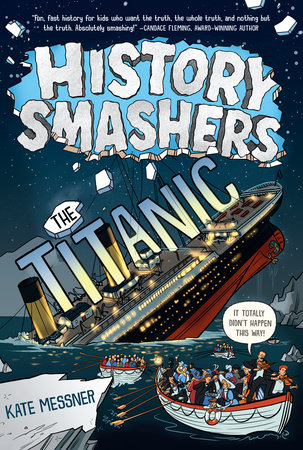
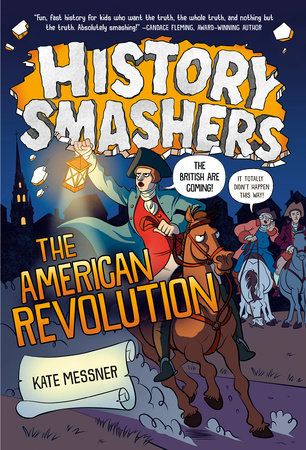
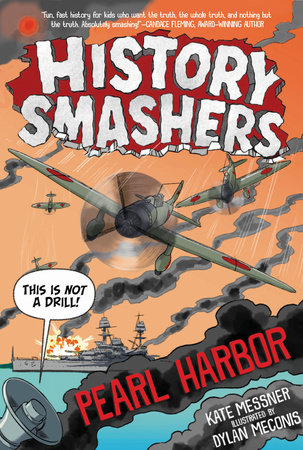 .
. 